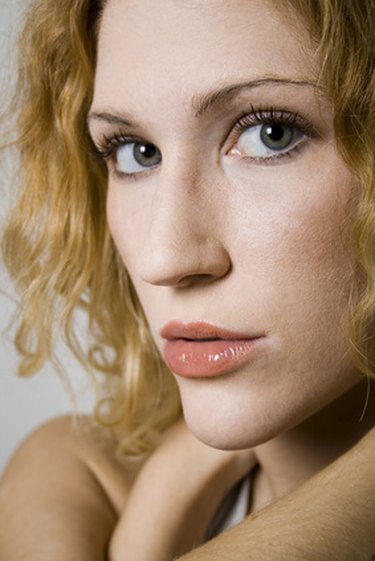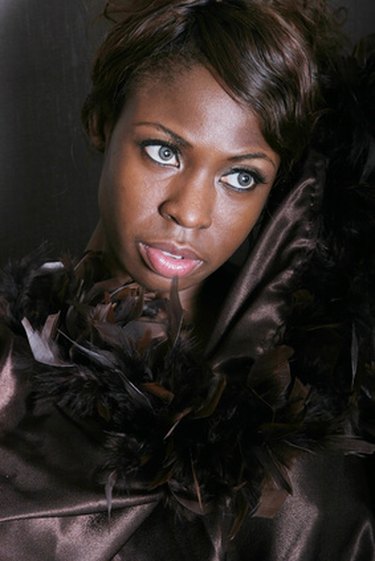Things You'll Need
Acrylic paints in burnt umber, raw sienna, white, black, purple (one with red undertones and one with blue), red (warm red with orange undertones), bright yellow (slightly orange, low transparency shade)
Paint brushes
Canvas, paper, wood or other painting surface
Palette (can be plastic or cardboard)
Water
Palette knife

Creating realistic skin tones is one of the most difficult-to-learn aspects of painting. Fortunately, once you understand the basics of color blending and learn to "see" base colors in skin tone, it becomes much easier. When working with acrylic paints it is important to keep the color fastness and transparency levels of your paints in mind. Color fastness, mentioned in paint's label, indicates how resistant the color is to fading. Transparency refers to whether you can see through the paint. You should use paints of a similar color fastness to avoid uneven fading, and avoid transparent colors completely when creating skin tones since they may become murky when you mix them.
Step 1

To get a pale skin color with a peach shade, mix together about 1 tablespoon of raw sienna with 1/2 teaspoon of burnt umber. Add an 1/8 tablespoon of yellow and just a tiny touch of your brush's worth of red. Add white until the shade is your preferred shade of pale skin tone. For a blue undertone, use a cool (blue) yellow and the lighter shade of purple in place of the red.
Video of the Day
Step 2

To mix a mid-toned or tan skin color, mix together about 1 tablespoon of burnt umber with 1 teaspoon of raw sienna. Add 1/8 teaspoon of yellow and a touch of red. Add white until you've reached your desired shade of tan. For an olive skin tone you can add a touch of yellow-green paint.
Step 3

To obtain a dark skin tone, mix together about 1 tablespoon of burnt umber with 1 teaspoon of raw sienna. Add 1/8 teaspoon of yellow and a touch of red. At this point the mix may be a good dark skin tone. If you want it darker, add 1/8 of a teaspoon of the darker purple for a very dark black, and burnt umber for a warm black. If it becomes too dark, lighten the color using yellow, not white. If you want the skin very dark, add a touch of black paint, but use it sparingly since it can make the shade look ashy and monotonous instead of luminous and dynamic.
Step 4
Vary these basic skin tones when painting them. Humans are not solid blocks of a single color, they have many different shades: pinker cheeks, redder or browner lips, shadows under the eyes. For the best effect, use a number of different skin tone mixes, with different base shades -- blues, pinks, greens, yellow and reds -- and blend them together to create a more human effect.
Tip
One brand's red cadmium hue may be a completely different color in another brand. For this reason and the different amount of pigments in some paints, paint mixing is an imperfect science, and it is virtually impossible to give exact measurements for paint mixing -- unless you are using only the same brand, from the same batch, since there are variations between batches. Learn to measure visually and gauge how much of a color you need by mixing your paints fearlessly. Even if you end up with an unusable color, you will learn skills.
Warning
Avoid using black and white until you are reasonably sure you have the right shade and simply want to lighten or darken it. They can make color mixing difficult until you have more experience. Never mix black and white together to make a skin tone. They will make your colors murky and ashy looking, and possibly unusable.
Video of the Day